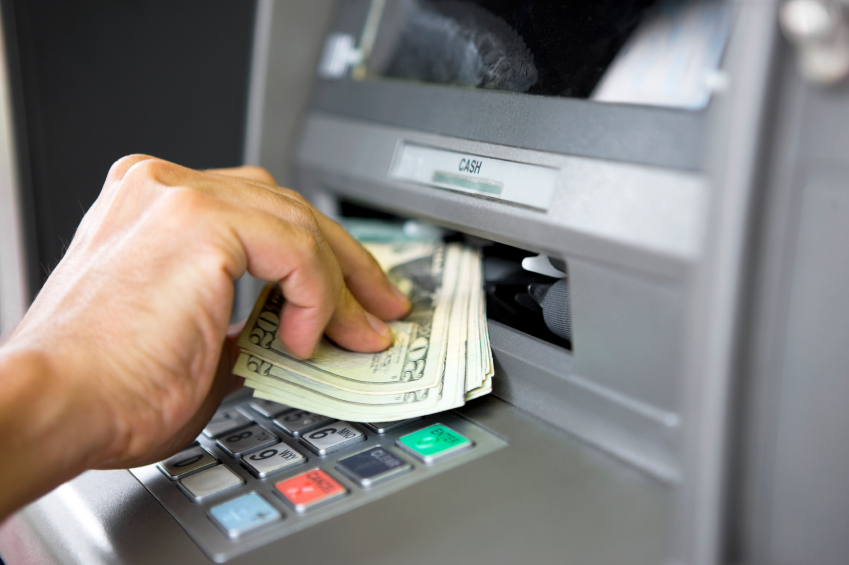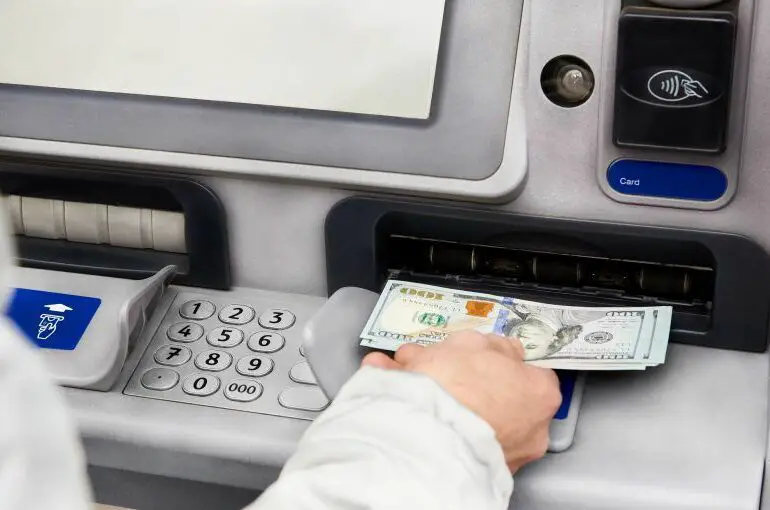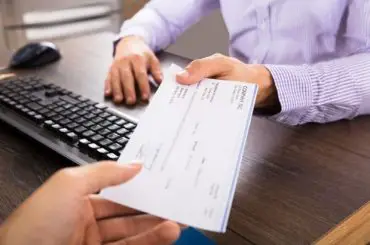Information presented on this web page is intended for informational and educational purposes only and is not meant to be taken as legal, financial, investment or tax advice. We do not accept any responsibility for any trading or investment related losses. Please review our disclaimer on before taking action based upon anything you read or see.
Can you deposit money at an ATM that isn’t your bank? This is a question that many bank clients are asking these days. Thus, we have made this post to educate you. Automatic teller machines (ATMs) have gone from being a novelty in 1967 to being mainstream in today’s globe.
According to the ATM Industry Association, banks worldwide operated an estimated 3 million ATMs in 2017. While ATMs are still widely used for withdrawals, many people are unaware that you can use them to make deposits. Those who accept deposits may generally complete the transaction in very few seconds or less. Read below to find out how to deposit money at an ATM that isn’t your bank.
Can you Deposit Money at an ATM that isn’t your Bank?

You may be able to deposit cash or checks at an ATM controlled by another bank in certain instances. Some banks are members of networks that accept each other’s deposits. This typically enables you to deposit money at their ATMs and transfer it to your account. Based on your bank’s restrictions, it may take some time for these transactions to appear in your account.
How to Deposit Money at an ATM that isn’t your bank

You won’t be going to your area institution’s bank teller to get your payments and paychecks wherever they should go. If you put money into an ATM, you may escape the hassle of operating during bank office hours. Here’s how you transfer funds at an ATM that isn’t affiliated with your financial institution:
Method 1: Using an Envelope to Deposit
Step-1:
Check to see whether the ATM allows deposits in envelopes. This feature may not be available at smaller ATMs or in non-bank venues like convenience shops or restaurants. It does not receive envelope deposits if it has a designated slot for dispensing and collecting envelopes.
Non-envelope deposits may be the sole option at certain contemporary bank ATMs. See the second approach on this page for details on making such deposits. It’s possible that your bank won’t let you make deposits from ATMs that aren’t linked with it. Check the policies of your banking institution.
Step-2:
Input your ATM or debit card and provide your identification number (PIN). This aspect of the procedure is identical to when you withdraw money. Find the “deposit” tab on display or the screen’s equivalent button (on older machines). If there isn’t a deposit option on this ATM, you’re out of luck.
Step-3:
Sign any checks that you will be depositing. On the reverse, in the designated spot, sign them. For enhanced protection, write “for deposit only” underneath your signature. This endorsed check may only be deposited, not cashed if lost.
Step-4:
Get a deposit slip ready. Your name, location, and account number should already be on the check if you’re using a chequebook slip. Fill out your name, location, and account number on a blank deposit slip, including those available at a bank branch. Any form of deposit slip may have the date added to it.
On the designated line, write the total amount of cash to be deposited, and then list checks one by one in the available slots on the front. When putting money into an ATM, you don’t have to sign a deposit slip. A signature is only needed when you request the cash from a teller window deposit.
For convenience and safety, you may choose to sign your checks and prepare your deposit slip ahead of time. It’s safer and less likely to anger others in line behind you if you keep your time at the ATM to a minimum.
Step-5:
Deposit the ATM’s deposit envelope. Newer devices may spew deposit envelopes out of a slot. However, older machines may have a little door that you pull open to expose them.
Transfer your deposit to the one offered by the machine, even if you have it arranged into an envelope. Ensure the envelope contains all your checks, cash, and deposit slip. Securely close it. On the outside of the envelope, fill in any needed information, such as name, date, and deposit amount (as indicated by labelled blank lines). While preparing your deposit, the ATM may inquire whether you want additional time. To allow yourself more time to get things in order, press the specified button.
Step-6:
Verify your deposit by inserting your completed and sealed envelope. The slot you will insert the envelope should be marked, and flashing lights may be the primary signal. It’s also possible that it’s the same slot where you got your deposit envelope.
Enter the entire amount of your deposit when requested by the ATM, before or after making the current transaction. If you need a reminder, jot down the whole amount on a piece of paper ahead of time. Take great care to be precise. The bank should correct any discrepancies, but it is faster and more efficient to correctly get things done the first time. Please verify that you want a receipt and retain it for your reference until your deposits are cleared.
Step-7:
Keep an eye on your account to see if your deposits have cleared. Cash or check deposits made by envelope are mechanically counted and entered into your account, so funds are not instantly accessible. The second business day after an ATM deposit is a typical wait time for funds to become available. In other words, if you deposit money on Monday, it will be available on Wednesday.
Method 2: depositing without using an envelope
Step-1:
Confirm that the ATM allows deposits made without using an envelope. This is becoming more widespread at ATMs in bank branches, and it is also becoming more popular in other places. Look for notifications on the machine or the screen. No-envelope ATMs typically feature separate slots for checks and cash that are indicated. Put your card, enter your PIN, and follow the instructions to make a deposit. At some time, the ATM will check if you can make no-envelope deposits.
Step-2:
Sign your checks and endorse them. A no-envelope transaction does not need a deposit slip. It’s a good idea, to sum up the entire dollar amount of your check deposits ahead of time. This will make it easier for you to evaluate the totals reported by the ATM. If there is a disparity, you will look over each deposited check separately.
Step-3:
When requested, feed checks into the designated slot. Although many computers can read checks in any orientation, it doesn’t harm to stack them neatly and in the same direction.
Most modern machines don’t need you to input the checks separately.
Step-4:
Double-check that the overall sum is correct before completing the transaction. You should go through each check individually and make any necessary modifications. On many machines, you may have a picture of the front of your check(s) printed on your receipt. If you’d want an extra layer of evidence of deposit for your records, choose this option.
Rejected checks, such as those with illegible printing or writing, should be handed to you after your transaction. If this does not happen, contact the bank.
Step-5:
Using the ATM’s limit as a guide, deposit cash into the relevant slot. A typical stack of money has a maximum of 50 notes. The machine should scan currency in any orientation, but a clean stack would only help speed things up.
Unlike envelope payments, you must deposit money and checks separately. Deposit one and indicate that you’d want to conduct another transaction when requested on the screen.
Step-6:
Determine when deposits will be applied to your account. This will differ depending on the banking institution.
Because the money has been scanned and validated, non-enveloped cash deposits have the benefit of being instantly accessible in your account. On the other hand, cash deposits in envelopes must be unsealed, counted, and recorded. If you need money immediately soon and don’t have access to a bank location, a non-enveloped cash deposit can be the best option.
Frequently Asked Questions
Can you deposit money at an ATM that isn’t your bank?
Yes. You can deposit cash at an ATM that isn’t your bank through the tips highlighted above.
When I deposit money at an ATM that isn’t my bank, are there any fees?
Yes. Not all ATMs work the same when it comes to costs connected with depositing cash or checks. When you use your own bank’s ATM, you usually don’t have to pay a charge. You may be charged a price if you use a non-network computer. When you use an ATM run by a different bank, you may be charged a fee. The bank and the ATM operator may impose additional fees in these situations.
Is it worthwhile to deposit money using ATMs?
Yes. Depositing money using ATMs is worthwhile because of its numerous benefits.
Are there cameras in ATMs?
Yes. Most ATMs now have cameras integrated to capture evidence in the event of a theft or other crime.
Conclusion
In conclusion, most people conceive ATMs as a location where they may withdraw cash from a financial institution. Many ATMs, on the other hand, enable you to deposit money.
The procedure differs per bank and ATM, so consult your bank’s rules and follow the ATM’s recommendations. . On the other hand, if you desire more help on how to deposit money at an ATM that isn’t your bank, the tips above will aid you immensely.




